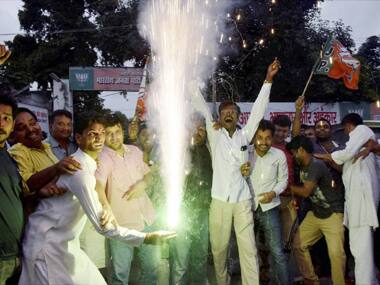By Sanjay Kumar Various caste communities in Bihar seem to be polarized for or against one of the two big alliances ahead of the state assembly polls; however, it is the lower backward caste voters, referred to as Most Backward Castes, who might decide the outcome of the elections. The voters belonging to the lower backward castes are large in numbers. Different estimates throw up different numbers but it’s generally accepted that they roughly constitute 25 percent of the total voters in the state. While members from other castes have voted en-bloc for the party of their own choice in the recent past, the votes of the lower OBCs have remained divided among various political parties. Besides other considerations, the main reason for it is there are numerous castes within this category. They are, among others, Lohar, Kumhar, Badadhi, Sunar, Tatwa, Teli, Kahar and Kewat. Members of these communities provide traditional services to people. Going by the voting pattern in the last few elections, it’s proven that individual castes have voted for parties of their choice in large numbers. While the Yadavs have voted for the Lalu-led Rashtriya Janata Dal (RJD) in large numbers, the Kurmis have voted for the Nitish Kumar-led Janata Dal (United) in a big way. There is nothing hidden about the fact that upper castes voters have been consistently with the BJP for the last two decades. A large number of them, however, voted for the Congress earlier. Ram Vilas Paswan still remains the most popular leader amongst the Dalits, more so among the Paswans, and he has the capacity to lend this support to whichever party he may align with. No wonder Paswan manages to form an alliance with parties of his choice much more easily than others. For any party of LJP’s size, Paswan has managed to remain in power for much longer than any other leader. The reason for voters of a particular caste voting for a particular party in large numbers is mainly due to the leadership coming from that caste. The absence of leadership among the lower OBC voters has resulted in their votes getting split between various parties. The division of votes also took place because they voted mostly on local considerations. [caption id=“attachment_2456968” align=“alignleft” width=“380”]  Representative image. PTI[/caption] Findings of the surveys conducted by the Centre for the Study of Developing Societies during various Assembly and Lok Sabha elections indicate that the votes of the lower OBC remained divided between the RJD and the JD (U)-BJP alliance till the 2005 elections. It is only after the 2009 Lok Sabha elections that we witness a clear shift in preference. They voted for the JD (U)-BJP alliance in bigger numbers than in any elections in the last few decades. This shift got further consolidated during the 2010 assembly elections and 2014 Lok Sabha elections. Since 1996 till 2010, when the JD(U) and the BJP had been in alliance, one wonders if the lower OBC voted for the JD(U) or for the BJP. Findings from the 2014 survey data do indicate a massive shift towards the BJP when the party had no alliance with JD(U) - a clear indication of the party being more popular among this category of voters. There are also indications that the BJP benefitted from its alliance with the JD (U) at least with regard to the lower OBC voters as large numbers of them preferred Nitish Kumar-led JD(U) more than the BJP. However, one can’t deny the fact that the 2014 Lok Sabha elections the shift was due to the personal popularity of Narendra Modi. One cannot say for sure whether things stand where they were. With Upendra Kushwaha on their side, the BJP reminding the voters about the caste to which the prime minister belong (lower OBC), and some clever ticket distribution (giving proper representation to the lower OBC candidates), I personally believe, the BJP may corner a bigger chunk of these votes in the forthcoming assembly elections. When the backward castes managed to capture power in Bihar in the post-Mandal period, it was largely the upper backward who monopolized political power in the state. For the first 15 years, the political power in some form or the other remained in the hands of the dominant backward, the Yadavs, and then passed on to the other dominant caste, the Kurmi, when Nitish Kumar-led JD(U)-BJP alliance formed the government in Bihar in 2005. The lower OBCs always hoped that power would get decentralized and trickle down to them for their benefit. The hope remained alive at least for a few years. The prospect has got alive again with the BJP as the possible agent of change. Hopes, aspirations and perception have an important role in mobilizing opinion and finally votes. It remains to be seen which party manages it the best. The author is Professor and Currently the Director of the Centre for the Study of Developing Societies (CSDS), Delhi
Various caste communities in Bihar seem to be polarized for or against one of the two big alliances ahead of the state assembly polls; however, it is the lower backward caste voters, referred to as Most Backward Castes, who might decide the outcome of the elections.
Advertisement
End of Article
Written by FP Archives
see more


)
)
)
)
)
)
)
)
)



